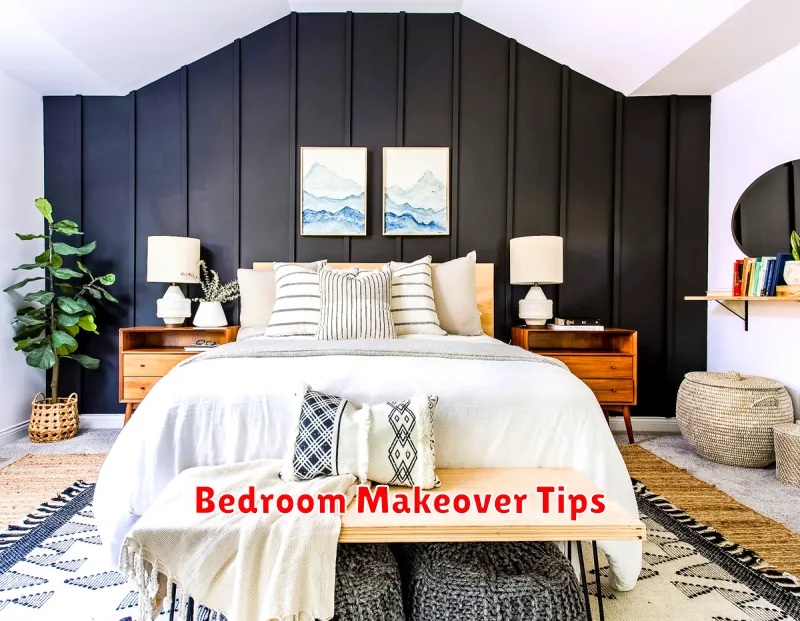Transform your bedroom into a haven of tranquility with these 10 bedroom makeover ideas. Create a truly cozy retreat where you can relax and rejuvenate. Discover inspiring designs focusing on comfort, style, and functionality to achieve your dream bedroom makeover. Whether you prefer a minimalist aesthetic or a luxuriously layered space, these ideas will help you achieve the perfect cozy bedroom for ultimate relaxation.
Soft Neutral Tones
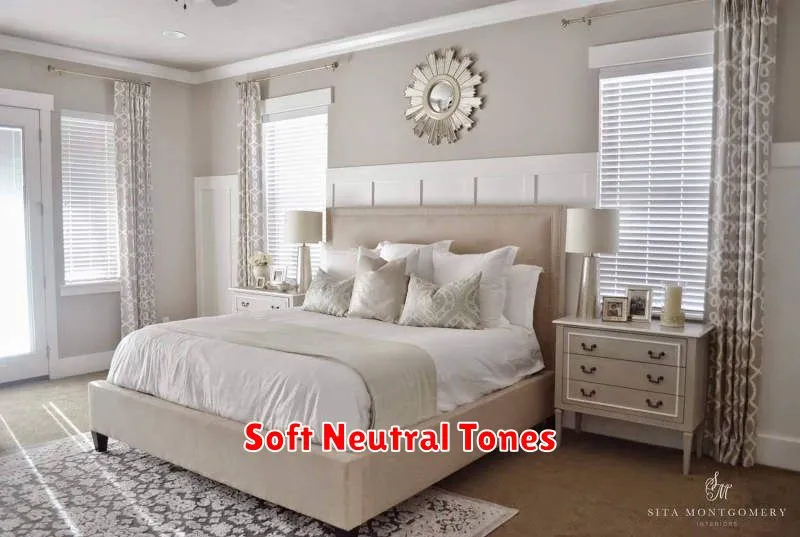
Soft neutral tones are increasingly popular in interior design, offering a versatile and calming aesthetic. These colors, ranging from creamy whites and warm greys to subtle beiges and muted browns, create a sense of tranquility and sophistication.
The versatility of soft neutral tones is a key factor in their widespread appeal. They serve as a perfect backdrop for a variety of styles, from minimalist and modern to traditional and eclectic. This adaptability allows for easy customization and the incorporation of bolder accent colors or textures without overwhelming the space.
Beyond their aesthetic appeal, psychological benefits are often associated with these muted palettes. The calming effect of soft neutrals can contribute to a more relaxed and peaceful atmosphere, promoting a sense of well-being. They are often used in bedrooms and living spaces to create a haven from the stresses of daily life.
When choosing specific shades, consider the natural light in your space. A north-facing room might benefit from warmer neutrals, while a south-facing room might tolerate cooler tones. Experimenting with different undertones – whether they lean towards pink, green, or yellow – can add depth and personality to the overall scheme.
To avoid a monotonous look, it is important to introduce texture and contrast. This can be achieved through the use of varied materials like natural wood, linen fabrics, or stone accents. Layering different textures will add visual interest and prevent the space from feeling flat.
In conclusion, soft neutral tones offer a timeless and elegant approach to interior design. Their versatility, calming effect, and adaptability make them an excellent choice for creating a sophisticated and welcoming atmosphere in any room.
Minimalist Scandinavian Style

The minimalist Scandinavian style, also known as Scandi minimalist, is a popular interior design aesthetic characterized by its clean lines, functionality, and a focus on natural light and natural materials. It embodies a sense of simplicity and calmness, creating a space that is both visually appealing and incredibly livable.
Key elements of this style include a neutral color palette, typically featuring whites, grays, and beiges, often accented with muted blues or greens. Natural textures such as wood, wool, and linen are prominent, adding warmth and depth without overwhelming the minimalist aesthetic. Furniture is typically functional and uncluttered, with a preference for simple, streamlined designs.
Lighting plays a crucial role in Scandinavian minimalist design. Natural light is maximized through the use of large windows and light-colored walls. Artificial lighting is often soft and diffused, contributing to the overall feeling of serenity. Consider incorporating pendant lights, floor lamps, and table lamps strategically to create a warm and inviting atmosphere.
The absence of clutter is paramount. Only essential items are displayed, allowing the inherent beauty of the space and the chosen furnishings to shine. Storage solutions are often integrated seamlessly into the design, ensuring that everything has its place and remains out of sight. This contributes to the overall sense of order and tranquility.
In conclusion, the minimalist Scandinavian style is more than just a trend; it’s a lifestyle choice that prioritizes functionality, simplicity, and a connection to nature. By carefully selecting natural materials, maintaining a neutral color palette, and emphasizing clean lines and ample natural light, you can create a space that is both aesthetically pleasing and incredibly calming.
Accent Walls with Bold Colors
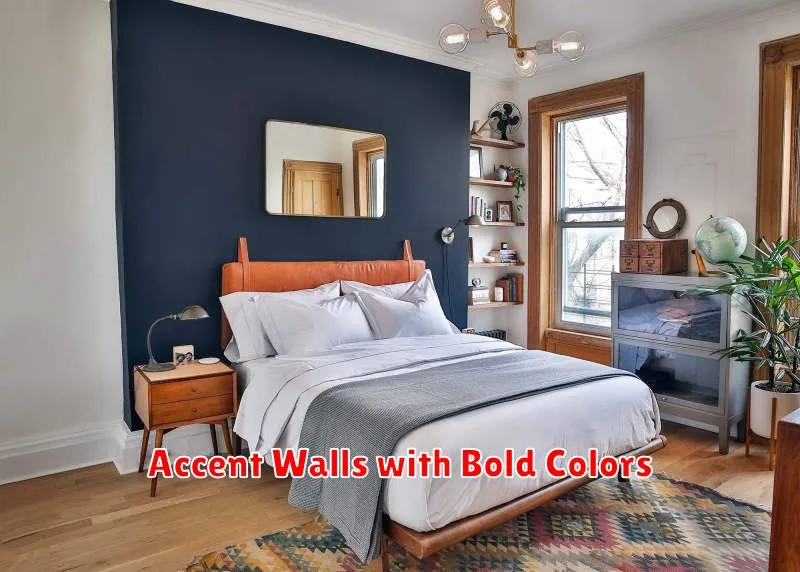
Accent walls are a popular design choice for homeowners seeking to add visual interest and personality to their living spaces. By painting a single wall a contrasting or bold color, you can create a focal point that dramatically alters the feel of a room.
The strategic use of color can significantly impact the perceived size and ambiance of a room. A dark accent wall can make a room feel cozier and more intimate, while a light accent wall can make a small room feel more spacious and airy. The choice of color should complement the existing décor and overall style of the home.
Selecting the right color is crucial. Consider the existing palette, furniture, and lighting when making your decision. Bold hues like deep blues, rich reds, or vibrant greens can create a dramatic statement, while softer shades like muted yellows or pastel greens can offer a more subtle yet still impactful change. Testing paint samples on the chosen wall is highly recommended before committing to a full paint job.
Beyond simply painting, there are other ways to create a striking accent wall. Textured wallpapers, wood paneling, or even a gallery wall featuring artwork and photographs can effectively serve as a focal point. The key is to choose a material or design that complements the overall aesthetic and enhances the room’s character.
In conclusion, incorporating an accent wall is a simple yet effective way to elevate the design of any room. Careful consideration of color, texture, and overall style will ensure a successful and visually appealing result that reflects your personal taste and enhances your home’s beauty. Remember that the impact of an accent wall goes beyond mere aesthetics; it can dramatically alter the mood and feeling of a space.
Built-In Wardrobes
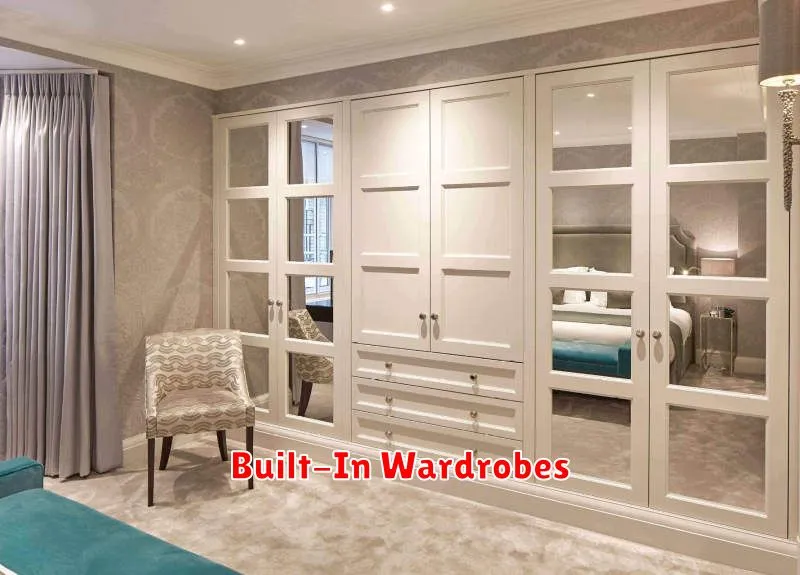
Built-in wardrobes offer a sophisticated and space-saving solution for bedroom storage. Unlike freestanding wardrobes, they are custom-designed to fit seamlessly into a specific alcove or wall space, maximizing storage capacity and minimizing wasted floor area.
One of the key advantages of built-in wardrobes is their adaptability. They can be tailored to accommodate a wide range of storage needs, from hanging garments and folded clothes to shoes, accessories, and even larger items like luggage. Interior configurations are completely customizable, allowing for the incorporation of features such as drawers, shelves, and specialized compartments.
The aesthetic benefits are equally significant. Built-in wardrobes can be designed to complement the overall style of the bedroom, seamlessly integrating with the existing décor. They can be finished to match the walls, creating a clean and uncluttered look, or they can be used as a focal point with a contrasting finish or unique detailing.
Furthermore, built-in wardrobes contribute to a sense of order and organization. By providing designated spaces for everything, they help to keep the bedroom tidy and free from clutter. This, in turn, can contribute to a more peaceful and relaxing atmosphere.
While the initial cost of a built-in wardrobe might be higher than that of a freestanding option, the long-term benefits, in terms of space efficiency, customizability, and aesthetic appeal, often make it a worthwhile investment. The increased property value resulting from this high-quality, bespoke storage solution should also be considered.
In conclusion, for those seeking a stylish, practical, and efficient storage solution, built-in wardrobes present a compelling choice. Their adaptability, aesthetic benefits, and contribution to a well-organized space make them a valuable asset to any bedroom.
Layered Bedding Textures
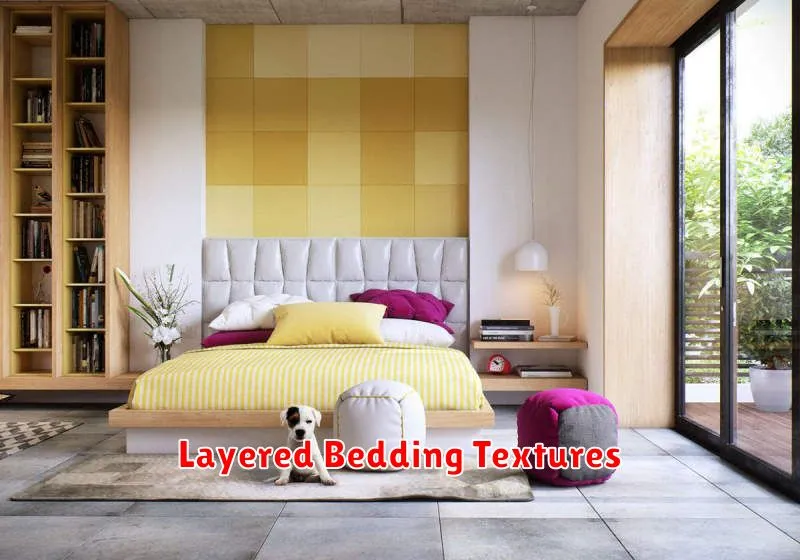
Creating a visually appealing and comfortable bed starts with understanding the interplay of textures in your bedding. Layering different textures adds depth and visual interest, transforming your bedroom from ordinary to extraordinary.
Consider starting with a base layer of crisp, high-thread-count cotton sheets. This provides a smooth, breathable foundation for the rest of your layering. The feel of these sheets against your skin is crucial for sleep quality.
Next, introduce a mid-layer of texture. This could be a lightweight cotton quilt for warmer months or a fluffy, knitted throw blanket for cooler temperatures. Consider contrasting textures here—a chunky knit paired with smooth cotton sheets offers a beautiful contrast.
The top layer is where you can really showcase your creativity and personal style. A plush faux fur throw adds luxury and warmth. A crocheted or woven blanket provides a more bohemian vibe. Even a simple, textured cotton duvet cover can elevate the overall look and feel of your bed.
Don’t forget the pillows! These are key to achieving a layered texture effect. Mix and match different pillowcases in varying textures: linen, velvet, or even silk. Consider adding decorative throw pillows in complementary colors and textures to complete the look.
Remember, the key to successful layered bedding is balance. Too many textures can appear cluttered, while too few lack visual interest. Experiment with different combinations to find what works best for your style and preferences. The right combination will create a haven of comfort and style in your bedroom.
Rustic Wooden Frames
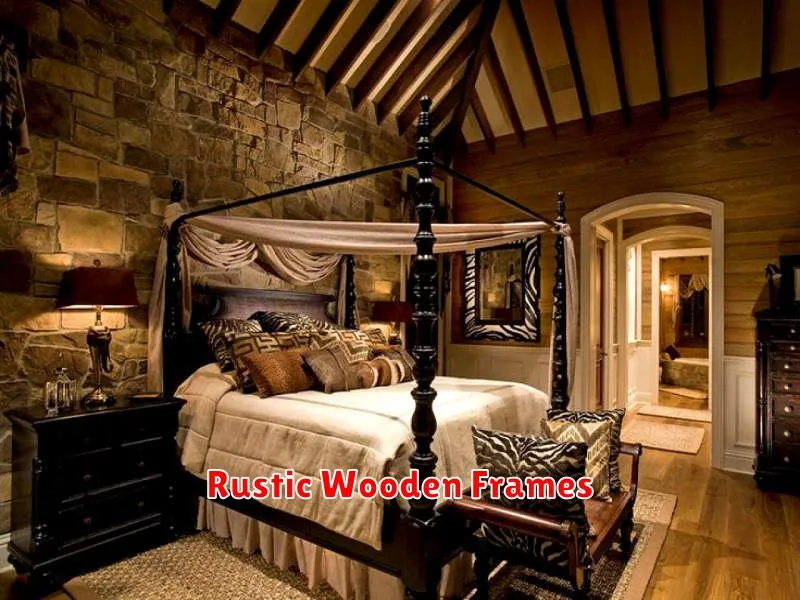
Rustic wooden frames offer a unique and charming way to display your cherished photos, artwork, or even mirrors. Their inherent warmth and character add a touch of vintage appeal to any space, from a cozy cabin to a modern apartment.
The beauty of these frames lies in their imperfections. Unlike sleek, perfectly finished frames, rustic styles often showcase the natural grain of the wood, knots, and variations in color. These irregularities are what give each frame its individual personality and make them so appealing.
Different types of wood are used, contributing to the frame’s overall aesthetic. Reclaimed wood frames, for example, often carry a rich history and a weathered look that’s hard to replicate. Other popular choices include pine, oak, and even driftwood, each offering a unique texture and tone.
The versatility of rustic wooden frames is another key advantage. They can be easily incorporated into a variety of interior design styles, from farmhouse and country to bohemian and industrial. Their earthy tones complement a wide array of color palettes and decorative elements.
Consider the size and shape of your frame carefully. Larger frames make a bold statement, while smaller ones offer a more subtle touch. Square and rectangular frames are the most common, but you can also find circular, oval, and even uniquely shaped options to perfectly match your style and the item being displayed.
When choosing a rustic wooden frame, pay attention to the finish. Some are left with a natural, untreated look, while others are stained, painted, or distressed for added character. Select a finish that complements your existing décor and personal preference.
Ultimately, a rustic wooden frame is more than just a way to display something; it’s a statement piece that reflects a love for natural beauty and handcrafted details. It adds warmth, character, and a touch of rustic charm to any setting.
Smart Lighting Solutions
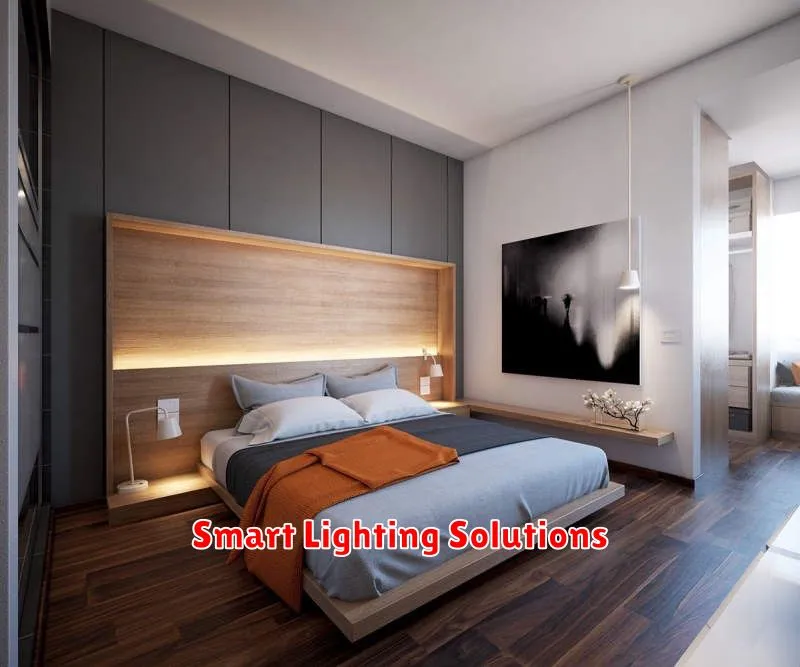
Smart lighting is revolutionizing the way we illuminate our homes and businesses. Gone are the days of simple on/off switches; today’s lighting systems offer a wealth of features designed for convenience, energy efficiency, and enhanced security.
One of the most significant advantages is energy savings. Smart bulbs and systems can be programmed to turn off automatically when not needed, reducing energy consumption and lowering electricity bills. Many systems offer automatic scheduling, allowing lights to turn on and off based on pre-set times or even sunrise/sunset.
Beyond energy efficiency, convenience is a major selling point. Control your lights remotely through a smartphone app, adjusting brightness, color temperature, and even creating personalized lighting scenes. Imagine setting the perfect ambiance for a movie night with a tap on your phone.
Enhanced security is another key benefit. Smart lighting systems can be integrated with security systems, automatically turning on lights when motion is detected, deterring potential intruders. You can also simulate occupancy even when you’re away, creating the illusion that someone is home.
The versatility of smart lighting is also noteworthy. Different types of bulbs, from LEDs to smart strips, offer a variety of options to suit your needs and aesthetic preferences. Whether you’re looking to enhance the mood in your living room or highlight architectural details, smart lighting can help achieve the desired effect.
While the initial investment in smart lighting might seem higher, the long-term benefits in energy savings, convenience, and security often outweigh the cost. As technology continues to advance, we can expect even more innovative and affordable options to emerge in the future.
Space-Saving Furniture
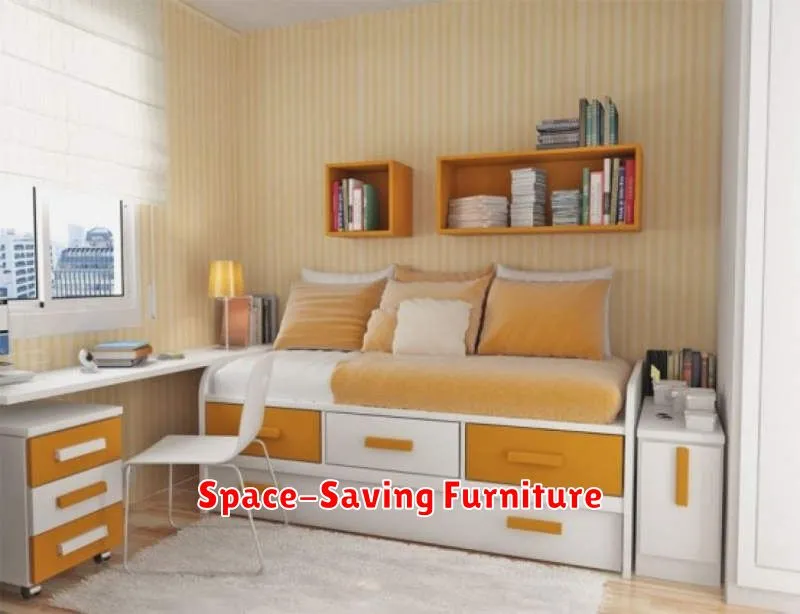
Finding the perfect furniture for a small space can be a challenge. Space-saving furniture offers clever design solutions to maximize functionality while minimizing footprint. It’s all about making the most of every square inch.
Multi-functional pieces are a cornerstone of space-saving design. Think sofa beds that convert from seating to sleeping areas, ottomans with hidden storage, or coffee tables that lift to reveal additional workspace. These pieces effectively serve multiple purposes, eliminating the need for separate, space-consuming items.
Vertical storage is another key strategy. Tall, narrow bookshelves, wall-mounted units, and lofted beds maximize vertical space often left unused. By utilizing the height of the room, you create valuable storage without sacrificing floor space.
Foldable and collapsible furniture offers incredible flexibility. Folding chairs, tables, and even beds easily disappear when not in use, allowing for a more spacious feel during the day. This approach provides a great deal of adaptability for different needs and situations.
Built-in furniture seamlessly integrates into the architecture of a room. Custom-designed wardrobes, window seats with storage, and built-in desks create a unified look while maximizing space utilization. This provides a sleek, efficient use of your living area.
When choosing space-saving furniture, consider the materials and construction. Lightweight materials like bamboo or aluminum can help prevent a room from feeling cluttered. Also, pay attention to the overall style and how it fits into your existing décor. The goal is to create a functional and aesthetically pleasing space, no matter the size.
Luxury Hotel-Inspired Design

Transform your home into a luxurious retreat with design elements inspired by the world’s finest hotels. Achieving this look isn’t about price tags; it’s about attention to detail and creating a space that exudes sophistication and comfort.
High-quality materials are key. Think plush velvet upholstery, crisp linen bedding, and rich, natural woods. These materials instantly elevate the feel of a room, offering both visual and tactile appeal. Consider incorporating marble or stone accents for a truly luxurious touch.
Lighting plays a crucial role in setting the mood. Layer your lighting with a combination of ambient, task, and accent lighting. Soft, warm lighting is essential for creating a relaxing atmosphere, while strategically placed accent lights can highlight architectural features or artwork.
Color palettes should be carefully considered. Neutral tones like creams, greys, and beige form a sophisticated foundation, providing a blank canvas for pops of color through accent pieces. Think about incorporating jewel tones or metallic accents for a touch of glamour.
Don’t underestimate the power of texture. Mix and match different textures to add depth and visual interest. Combine the smoothness of silk with the warmth of wool, or the coolness of marble with the rusticity of wood. This layering creates a more dynamic and inviting space.
Finally, attention to detail is paramount. From perfectly placed throw pillows to elegantly styled books, every element contributes to the overall impression. Invest in high-quality accessories and carefully curate your décor to reflect your personal style while maintaining a sense of understated elegance.
By incorporating these elements, you can create a home that feels as luxurious and relaxing as your favorite five-star hotel, a true sanctuary of style and comfort. Remember, it’s the thoughtful details that truly make the difference.
Bohemian Vibes with Textiles
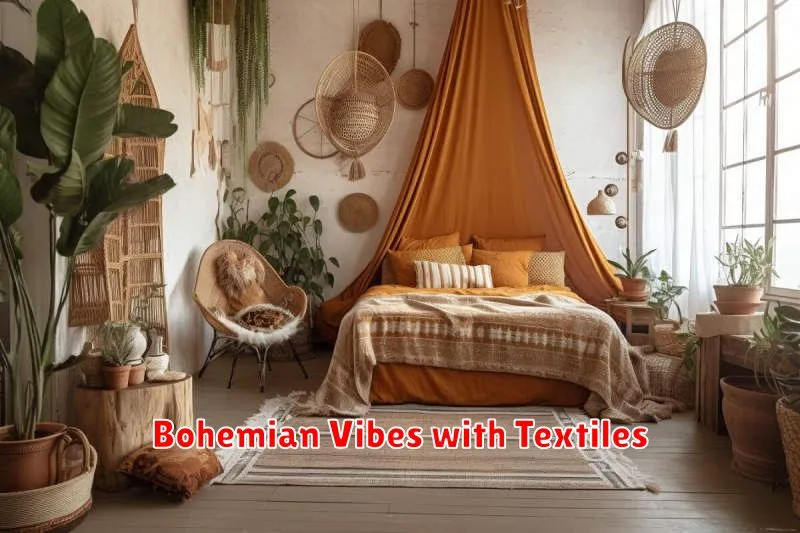
Textiles play a crucial role in achieving a true Bohemian aesthetic. Think layers, textures, and a vibrant mix of patterns and colors. The overall effect should be one of relaxed luxury and eclectic charm.
Natural fibers are key. Look for items made from cotton, linen, wool, silk, or jute. These materials bring a sense of warmth and authenticity to the space. Consider incorporating handwoven rugs, embroidered throws, and macrame wall hangings for added texture and visual interest.
Don’t shy away from bold patterns and colors. A mix of floral prints, geometric designs, and ethnic motifs can create a captivating and dynamic atmosphere. Layer different patterns and textures to add depth and visual complexity. Think about using rich jewel tones, earthy neutrals, and vibrant accents to create a truly unique space.
Vintage and antique textiles can add a unique touch to your Bohemian décor. A well-worn tapestry, a hand-stitched quilt, or an antique kilim rug can bring a sense of history and character to the room. These pieces add personality and tell a story.
Finally, consider the practical aspects of your textile choices. Think about the durability and maintenance of each piece. While a certain level of wear and tear adds to the charm of the Bohemian style, you’ll want to choose pieces that can withstand everyday use. Careful selection and thoughtful placement will ensure that your textiles enhance the space for years to come.

